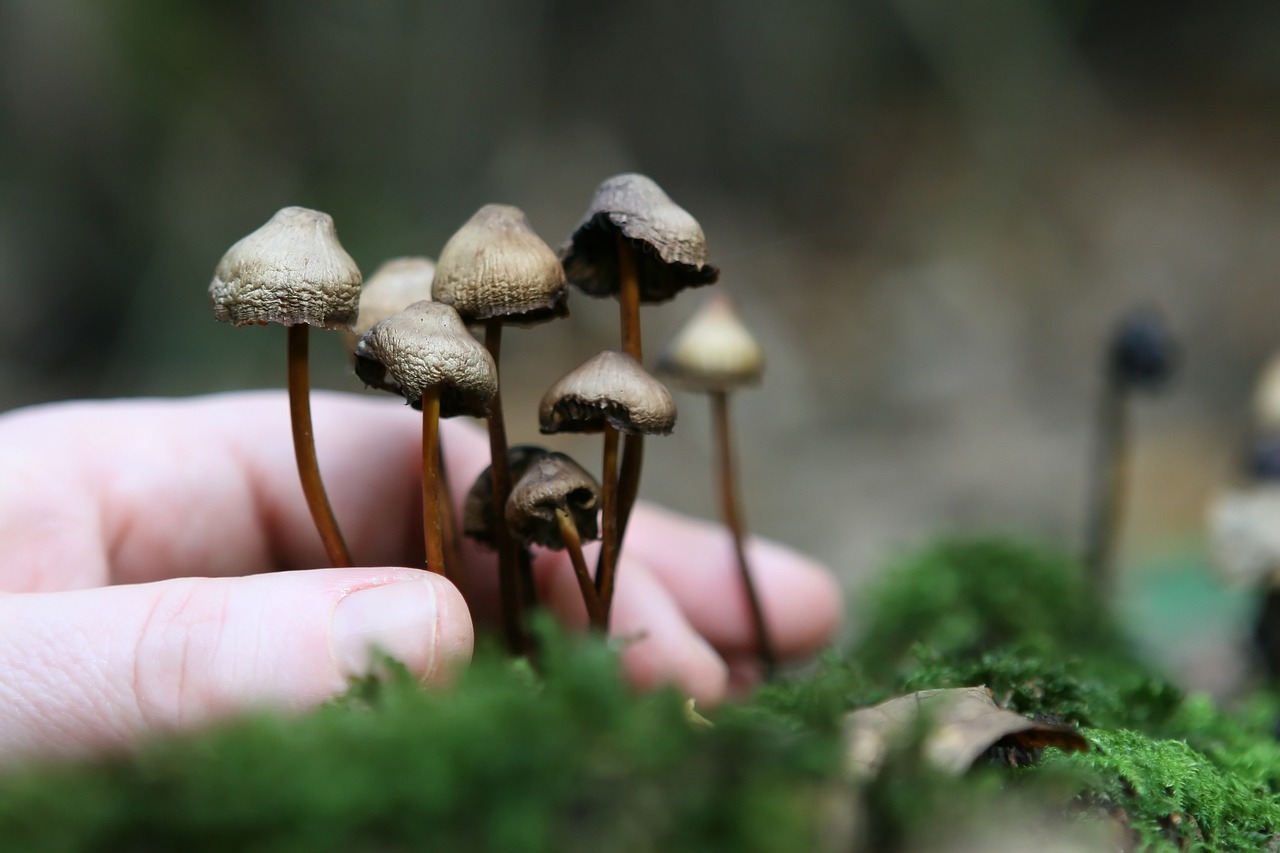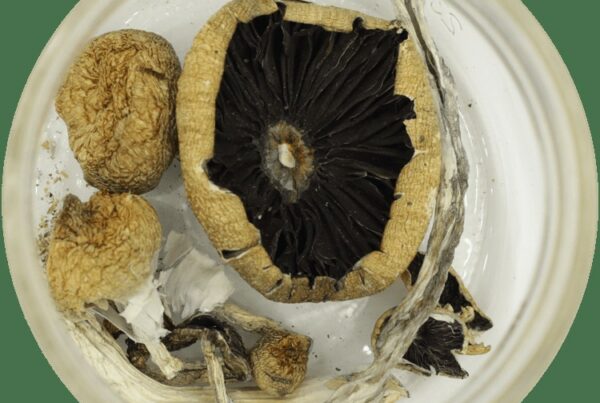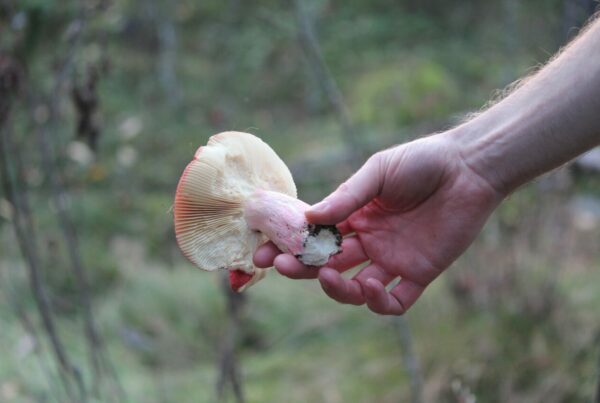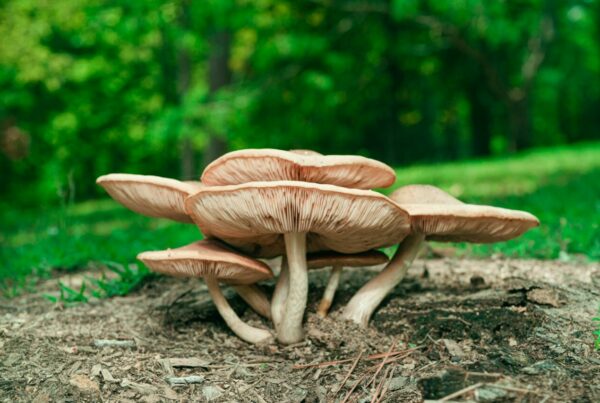Deciphering Mycelium
Mycelium is the root system of fungi, acting as the digestive tract for mushrooms. It hunts for nutrients, converts them into a form that the fungus can utilize, and subsequently nourishes the fungus. The outcome of this process enriches the nearby soil, supplying vital nutrients for other plants and creating a nutrient-rich biomass that serves as excellent mulch for gardening.
Apart from their contribution to mushroom development, mycelium networks play a crucial role in the wellbeing and growth of numerous terrestrial plants, including trees. For example, tree roots establish a symbiotic exchange with fungi: the tree offers the fungus carbon in the form of sugars, and in exchange, the fungus provides the tree with essential minerals such as nitrogen and phosphorus. Learn more about this relationship here.
Fascinatingly, mycelium networks function as an underground communication system among plants, mirroring the neural networks in our brains. Recent scientific studies propose that plants and trees might have rudimentary nervous systems that fungi could possibly influence, affecting processes like communication, memory, and learning. Furthermore, mycelium boosts soil health by decomposing organic waste and neutralizing any pollutants present.
If you’re intrigued by the idea of growing magic mushrooms, comprehending the evolution of mycelium is crucial. While the cultivation process may be intricate for novices, acquiring knowledge about mycelium is an essential first step. Although you can always opt to buy mushrooms from Shrooms Online Canada online, understanding mycelium can enrich your growing experience.
Mycelium’s Development Process
When fungal spores stumble upon an environment favorable for growth, they kick-start the formation of two kinds of mycelium. The first kind, referred to as primary or monokaryotic mycelium, is distinguished by a single nucleus in each cell. This type of mycelium is usually invisible to the naked eye. The second kind, termed as secondary or dikaryotic mycelium, is visible and houses two nuclei in each cell.
As the fungal spores start to germinate, they form what is known as a primary or monokaryotic mycelium. When this mycelium encounters another compatible one, they can combine to form a secondary or dikaryotic mycelium. It’s this secondary mycelium that has the ability to produce mushrooms or sclerotia.
Different Types of Mycelia
Mycelia can be categorized into three types, two of which are signs of successful cultivation.
- Rhizomorphic mycelia look like extending threads and are easily identifiable. Like all mycelia, they are made up of units called hyphae. Rhizomorphs are the group of interconnected hyphae. Initially, Rhizomorphic mycelia expands, then sends back chemical signals to the colony to indicate that the area is suitable for nutrient supply. The remaining mycelia then follow. The hyphae at the front of the rhizomorphic mycelia release peroxidase, a compound that breaks down the material ahead for food. The hyphae then spread over the material, distributing the nutrients to the entire colony. Due to its higher chance of mushroom production, many cultivators prefer this type of mycelia as Rhizomorphic mycelia sprout from the substrate.
- Tomentose or “Fluffy” mycelia, while similar to Rhizomorphic mycelia, have a distinct arrangement of their strands. Though not immediately visible, the strands are present. Their cottony appearance is due to the clustering of the strands. The kind of mycelium (tomentose or rhizomorphic) that develops largely depends on the growing conditions. There is an ongoing debate among cultivators about whether the type of mycelia influences the growth rate or yield.
- Aerial mycelia form when the growing conditions are not ideal. In such cases, the mycelia tend to grow outward instead of spreading across the medium or forming a ball. Often misinterpreted as bacterial contamination, this type of mycelia can inhibit your mushroom cultivation, leading to weaker, smaller mushrooms. Aerial mycelia usually occur due to insufficient air exchange and excessive humidity.
Mould or Mycelium?
It’s important to distinguish between mould and mycelium. If you notice green, blue, grey, or black spots on or in your fruiting box, it is likely that your culture is contaminated. The key indicator is discolouration. However, blue spots can sometimes just be bruises.
Cobweb moulds are typically very apparent. Instead of featuring the bright The Mycelium, which usually has a grey tinge, is characterized by its fluffy, string-like texture. Although cobweb and green moulds do not pose a threat to human health, they can adversely affect the wellbeing of your mushrooms.
Shrooms Online Canada: Your Ultimate Guide to Everything Mushroom
Whenever you think about psychedelic mushrooms in Canada, remember Shrooms Online Canada. We are dedicated to providing you with essential information to ensure a safe and pleasurable mushroom journey.





